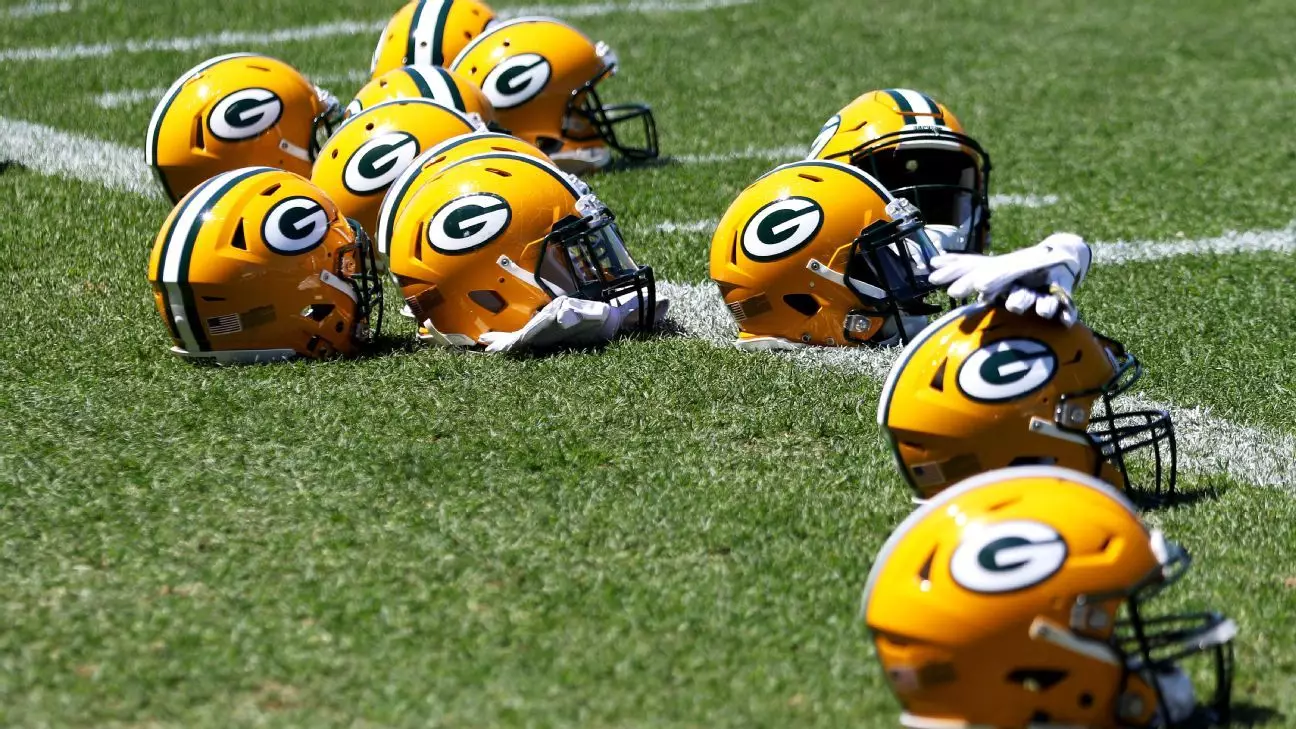Publicized financial reports often serve as shiny veneers, masking the underlying complexities and potential pitfalls of an entity’s economic health. The NFL’s recent surge in revenue—hitting over $13 billion shared among its 32 teams—may appear as a testament to the league’s skyrocketing popularity. However, this dazzling data also warrants a critical lens. Are these numbers truly indicative of sustainable economic strength, or do they mask systemic vulnerabilities? While the NFL’s growth, driven largely by lucrative broadcast contracts and streaming efforts, suggests an expanding entertainment empire, it’s essential to probe whether this prosperity is as widespread or resilient as it appears.
What the NFL emphasizes—its soaring revenue, its billion-dollar broadcasting deals—serves to inflate its grandeur and appeal to fans and stakeholders alike. Yet, such figures can be misleading. They often fail to account for the massive costs associated with maintaining and enhancing league infrastructure, player salaries, legal obligations, and the disparities in local team revenues. In particular, the league’s dependence on television and streaming underscores a fragile model vulnerable to shifting consumer habits and technological disruptions. This reliance may generate impressive short-term gains but raises questions about long-term viability, especially as consumer preferences evolve and new competitors emerge.
The Myth of Financial Equilibrium in a League Owned by the Public
Unlike many sports leagues, the NFL’s financial transparency—embodied by the Green Bay Packers’ unique public ownership—both illuminates and distorts the reality. The Packers’ detailed financial disclosures offer a rare glimpse into league-wide revenue distribution, reinforcing the perception of widespread financial success. Yet, their status as the only publicly owned team introduces a different perspective: the need for transparency highlights the contrasting economic strategies among league members.
The Packers’ model—stemming from a community-focused ownership structure—limits their ability to attract private investments typical of other franchises. This, paradoxically, constrains growth opportunities while fostering a sense of community ownership and stability. Nonetheless, it also exposes vulnerabilities: with no single wealthy owner backing financial heft, the team must rely heavily on local revenue, donations, and carefully managed reserves. The $579 million reserve fund speaks to prudent fiscal management, but it also underscores how the league’s wealth is not as evenly distributed as the headline numbers suggest.
This uneven economic landscape raises doubts about the league’s touted growth: does the league’s overall financial health mask deeper inequalities? Smaller-market teams may struggle to keep pace with giants, risking a future where the league consolidates its wealth among a few prominent franchises, thereby destabilizing competitive balance and fan engagement across the board.
Myth Busting: Is the League Truly Prosperous or Just Savvy Marketing?
The league’s bounding enthusiasm about its financial fortunes—highlighted by Murphy and other executives—is as much about marketing as it is about reality. The narrative of continuous growth, fueled by streaming and international markets, creates a compelling storyline of dominance. Yet, underlying issues—such as player health, labor disputes, and the rising costs of operations—are often brushed aside in favor of good news.
From an analytic stance, the reality is more nuanced. Revenue growth is impressive but does not necessarily translate into equitable prosperity. Local teams, especially those in less affluent markets, often retain less than what the headlines imply. The NFL’s reliance on broadcast television revenue also signals a vulnerability: should cord-cutting accelerate or streaming revenues plateau, the league’s financial juggernaut could face severe setbacks.
Moreover, amid the league’s expanding revenue streams, player salaries and healthcare costs continue to escalate, posing sustainability risks. The league’s emphasis on media deals, rather than grassroots community engagement or player welfare, hints at a short-term focus driven by corporate interests. The true measure of the league’s financial health should extend beyond share prices and gross revenue figures and into its capacity to adapt to future economic and social shifts.
The Illusion of Stability and the Need for Real Reform
In the end, the NFL’s financial narrative appears as a well-orchestrated spectacle—impressive yet fundamentally fragile. The league’s apparent prosperity depends heavily on consumer loyalty, lucrative media deals, and a centralized marketing apparatus that consistently inflates its value. But underneath the veneer lies a league facing structural challenges: economic disparities among teams, rising costs, and a changing landscape of entertainment consumption.
True sustainable prosperity for the NFL must involve more than just celebrating record revenues and big stadium investments. It requires rethinking how the league balances profitability with social responsibility, competitive fairness, and long-term community engagement. As the league consolidates its economic power, critics must push for reforms that ensure this wealth benefits not just the owners or the broadcasting conglomerates but also the fans, players, and local communities who form the league’s foundation.
The NFL’s financial success remains a compelling spectacle for the masses, but it must be scrutinized with an eye toward equity and sustainability. Without such critical examination, the league risks building an empire founded on illusions, ultimately jeopardizing its legitimacy and future growth.

Leave a Reply